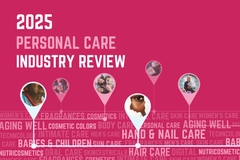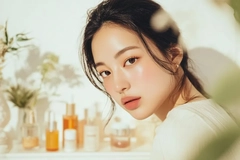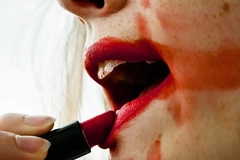L’Oréal hones in on burgeoning US market while reducing dependence on China

L’Oréal will sharpen its focus on targeting innovation opportunities in the US market, including meeting the beauty needs of increasing Latinx and multiracial populations. The cosmetic giant will also become less dependent on Chinese consumers for growth amid a continuous decline in quarterly North Asia sales due to a “challenging” Chinese ecosystem. Meanwhile, other personal care and beauty companies are facing similar challenges in China.
The announcement came as L’Oréal CEO Nicolas Hieronimus reported a growth in sales and profit driven by solid performance in hair care solutions and premium beauty products.
L’Óreal reported €43.48 billion (US$45 billion) up to December 31, 2024, in sales, a 5.6% increase compared to the previous year. By category, hair care remained “particularly dynamic,” notes the company.
Profit was driven by sales increases in some of the beauty brands’ biggest names. For instance, Kérastase maintained strong double-digit growth, becoming the largest brand in the Professional Products division. L’Oréal Professionnel and US hair care brands Redken also delivered solid performances.
L’Oréal Luxe grew by 2.7%, while the company’s Dermatological Beauty division shot up by 9.8%.
L’Oréal’s strategy for 2025 will be driven by a pipeline of new launches, according to Hieronimus.
“We remain optimistic about the outlook for the global beauty market and confident in our ability to keep outperforming it and to achieve another year of growth in sales and profit. We expect growth to accelerate progressively,” he says.
The pullback from China comes on the heels of the L’Oreal Groupe announcing a long-term, exclusive beauty partnership with French fashion house Jacquemus.
The designer had been searching for an investor to compete with luxury cosmetics conglomerates. L’Oréal’s investment will support retail growth and an expansion into beauty.
Coty’s financial highlights
Meanwhile, Coty reported its results for the first half and second quarter of fiscal year 2025. The company delivered strong gross and operating margin expansion in both periods.
 Beauty comapnies are experiencing sales declines in China.Coty saw growth in prestige and mass fragrances, as well as mass skin care, partially offset by declines in cosmetics and body care. The company also noted continued headwinds in the APAC region, particularly China.
Beauty comapnies are experiencing sales declines in China.Coty saw growth in prestige and mass fragrances, as well as mass skin care, partially offset by declines in cosmetics and body care. The company also noted continued headwinds in the APAC region, particularly China.
Coty CEO Sue Nabi notes that the beauty market has changed significantly in recent years, and similar to L’Oréal, China is becoming less important.
“From a category perspective, fragrances have accelerated significantly supported by structural consumer behavior shifts, while color cosmetics are challenged by evolving channel preferences and new business models. At a market level, China is no longer a key short-term growth driver for beauty, while the US market remains very dynamic,” she says.
“With this backdrop, FY25 is shaping up to be a pivotal year for Coty as we evaluate our operations to fuel Coty’s long-term success.”
Declines in China continue
Amorepacific Group recorded sales of KRW 4.2599 trillion (US$2.9 billion) and an operating profit of KRW 249.3 billion (US$171.5 billion) in 2024. Compared to the previous year, sales increased by 5.9%, and operating profit rose by 64%.
Amorepacific also made gains in the US and other Western markets, while seeing a decline in China. Notably, the Americas surpassed Greater China to become the group’s largest global market by revenue for the first time in the group’s history.
Sales increased 83% in the Americas, driven by strong growth from major brands, including the Korean skin care and makeup brand Laneige. In EMEA, overall sales tripled, with Laneige diversifying its channel portfolio to include the UK’s Boots and British online fast-fashion and cosmetics retailer Asos.
In contrast, the performance varied across Asian markets during the year, with sales in Greater China declining by 27%. In other Asian regions, including APAC and Japan, there was a 33% increase in sales.
According to Amorepacific, this was driven by the enhanced product co Edgewell Personal Care had a strong preformance in terms of finacials for its K-beauty brands.mpetitiveness of Laneige and the high-end Korean cosmetic line Sulwhasoo. The expansion of newly launched luxury, contemporary Seoul beauty brand, Hera and Korean dermocosmetic brand Aestura, also contributed to growth.
Edgewell Personal Care had a strong preformance in terms of finacials for its K-beauty brands.mpetitiveness of Laneige and the high-end Korean cosmetic line Sulwhasoo. The expansion of newly launched luxury, contemporary Seoul beauty brand, Hera and Korean dermocosmetic brand Aestura, also contributed to growth.
Edgewell flags market disruption in Asia Pacific
The Edgewell Personal Care Company also released its results for its first fiscal quarter of 2025 ended December 31, 2024. Net sales were US$478.4 million, a decrease of 2.1% compared to the prior year quarter.
The company notes growth in Sun and Skin Care, led by double-digit increases in Wet One’s and Grooming. However, these were offset by declines in Feminine Care and Wet Shave.
For Kenvue, Q4 results showed that net sales decreased by 0.1% to US$3.7 billion, while Organic sales increased by 1.7%.
The owner of Neutrogena and Aveeno experienced growth in Skin Health, Beauty, and Self Care. However, declines in Essential Health and market disruption in Asia Pacific impacted Kenvue’s results.
“We delivered on our 2024 profit commitments despite headwinds that resulted in softer than expected sales growth, and we enter 2025 as a more competitive company with stronger foundations,” says the CEO at Kenvue, Thibaut Mongon.
“We remain focused on leveraging our increased brand investments to accelerate growth and deliver long-term value creation.”












